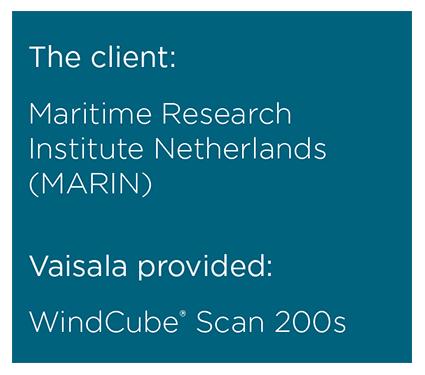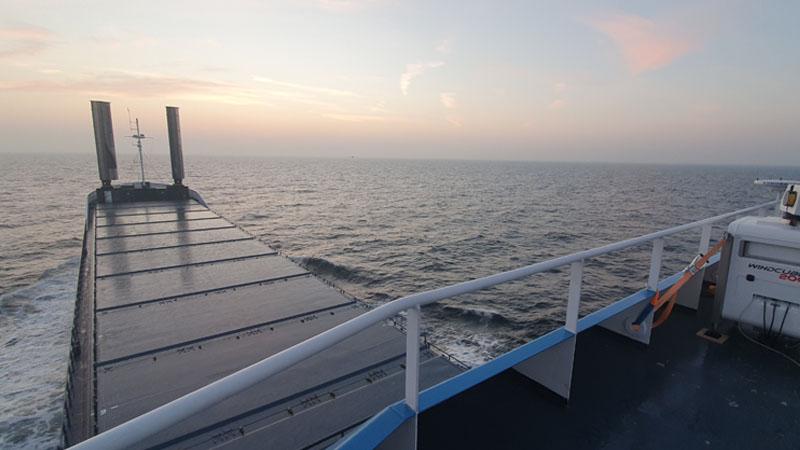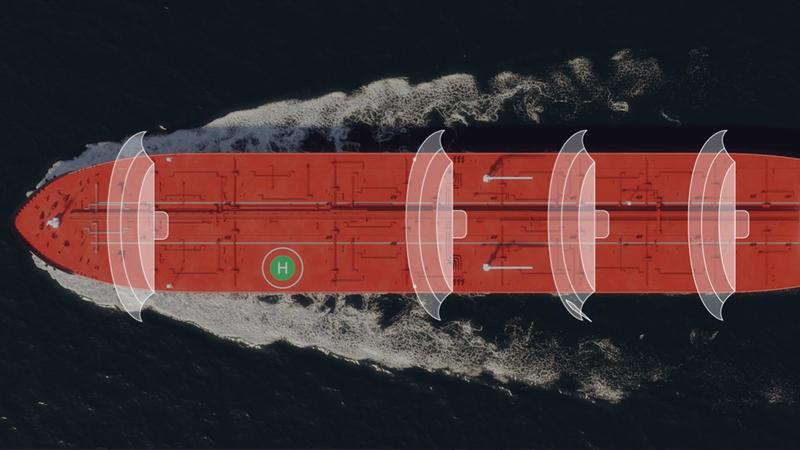Using remote wind monitoring to optimize wind-assisted propulsion
How MARIN is gaining performance and optimization insights for wind-assisted propulsion systems with Vaisala WindCube Scan

The maritime shipping industry is finding new ways to become cleaner and more sustainable. From optimizing ship design to adopting carbon-free or -neutral fuels, there are many ways to reduce pollution in overseas shipping.
Wind-assisted ship propulsion (WASP) is emerging as a promising method of harnessing the wind to reduce the use of fuel. WASP is a key technology in the future of clean maritime shipping, and MARIN—a leading maritime institute—is at the forefront. MARIN’s research capabilities combine software, model test facilities, simulators, and full-scale monitoring to enable cleaner, safer and smarter ships and operations.
The first complete wind profile from a vessel
There are several types of wind propulsion systems under development, and each must be tested extensively to evaluate its effectiveness. A critical aspect of performance testing involves capturing the wind profile surrounding a vessel to fine-tune propulsion system design and operation. Comprehensive, accurate wind measurements are essential: With it, researchers and operators can better understand and anticipate conditions to make the most of the surrounding winds.
MARIN teamed up with Econowind (a ship design and engineering company dedicated to wind- assisted ship propulsion) to evaluate in-situ wind conditions on a vessel equipped with two of Econowind’s VentiFoils® — aerodynamic, wing- shaped elements integrated with smart suction to create a high propelling force. The VentiFoils were installed on the forecastle of the MV Ankie, a freighter sailing the European coastal waters.
The two organizations launched this measurement campaign specifically to measure wind conditions with scanning lidar. Using scanning lidar enables an undisturbed, high-resolution 3D wind field without the use of additional wind measurement devices, and the data is essential for assessing the real-world performance of a wind propulsion system. The results would also provide insight on the value of using lidar on shipboard measurement campaigns.
This was the first time MARIN used lidar directly on a vessel to measure wind conditions for a wind-assisted propulsion system, and they needed the most accurate, dependable lidar available.
Reliable accuracy on board
MARIN selected Vaisala WindCube Scan to conduct the offshore measurement campaign. WindCube is the industry-trusted standard for accurate and reliable wind measurements, and WindCube Scan provides 3D scanning at ranges over 10 km from the shore. The organization installed the lidar along with ultrasonic anemometers, Motion Reference Units (MRU) and other instruments to verify accuracy and performance throughout testing.
The one-day trial was conducted on March 24, 2021, about 40 NM off the coast of Netherlands. MARIN and Econowind performed multiple runs from different wind angles with the VentiFoils in up and down positions. The researchers compared measurements from the anemometer in the forward mast against WindCube Scan at patterns including PPI: horizontal sweeps along the horizon, RHI: vertical sweeps such as between wings, and DBS: vertical upward scans.
Extracting vertical wind profiles with RHI offers insight into the actual behavior of the undisturbed wind over height during head winds. PPI scans reveal the undisturbed wind field outside the influence of the ship for an accurate comparison to predictions at the correct input wind speed and direction. DBS scans, taken before each run, provide a reference for all measurements.
Success for continuing research
The trials were successful. By using comprehensive lidar wind data, the VentiFoil operators gained new insight about accurately optimizing power to take full advantage of wind conditions.
WindCube Scan was proven to be valuable for measuring far-field wind data. Objects such as the VentiFoils and forward mast were easy to recognize in the data, and the lidar showed a fair comparison to the wind values at the same location as the anemometer in the forward mast. Researchers were able to obtain vertical wind profiles from the DBS scan patterns and compare them to a power law assumption for wind profiles. They also successfully calculated wind vectors (magnitude and direction) from the measured radial wind speed data in the PPI horizontal scans using the recent Volume wind algorithm.
All this information is essential for understanding the complete wind profile as well as fine-tuning operation and verifying system performance. The trials were conducted in relatively mild conditions without significant ship motions. MARIN will continue to evaluate lidar measurements in more severe conditions and, if more significant ship motions affect lidar measurements, they may develop a correction method using synchronous motions data.
"WindCube Scan offered unique wind field measurements. Instead of one point measurement by anemometer in the ship’s mast, this project’s measurements yielded full undisturbed wind field ahead of the ship and wind profile over height. As we continue our research, we will be evaluating this lidar even more as a future wind measurement solution to improve performance of wind- assisted vessels."
Gijs Struijk, Sr. Project Manager, MARIN



